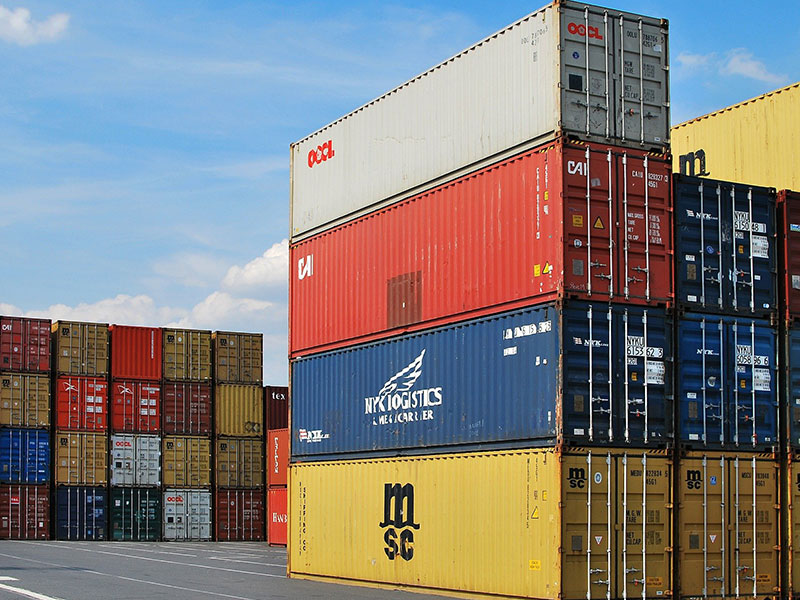World Container Model
TNO, in collaboration with T.U. Delft and Transport & Mobility Leuven, developed the world container model (WCM), a strategic model for global container transport. This model allows analysing possible future shifts in demand for container transport and evaluating the effects of transport policies on it. Unique to this model is a consistent and bundled description of global trade flows, container flows, and transport services, combined with a port choice model and a multimodal route choice model.
Multimodal route choice and port choice were performed using an enhanced logit choice model, which takes into account the degree of overlap between alternative routes in the network. The model takes into account transport times, tariffs, and time valuation of goods. It describes annual container flows over shipping routes and through 437 container ports worldwide, based on trade information to and from all countries and taking into account more than 800 maritime container line services. Import, export, and transhipment flows of containers at ports as well as hinterland flows are distinguished.
The model was calibrated with all available port statistics. Some scenario analyses done with the model in the past include the impact of slow shipping, the increase in land transport costs, major infrastructure projects such as the trans-Siberian Railway, and the opening of polar shipping lanes. The model has also been used to develop the European Commission's Trans-European Network programme and long-term forecasts of the Port of Rotterdam Authority.
View some presentations on the World Container Model:
Multimodal route choice and port choice were performed using an enhanced logit choice model, which takes into account the degree of overlap between alternative routes in the network. The model takes into account transport times, tariffs, and time valuation of goods. It describes annual container flows over shipping routes and through 437 container ports worldwide, based on trade information to and from all countries and taking into account more than 800 maritime container line services. Import, export, and transhipment flows of containers at ports as well as hinterland flows are distinguished.
The model was calibrated with all available port statistics. Some scenario analyses done with the model in the past include the impact of slow shipping, the increase in land transport costs, major infrastructure projects such as the trans-Siberian Railway, and the opening of polar shipping lanes. The model has also been used to develop the European Commission's Trans-European Network programme and long-term forecasts of the Port of Rotterdam Authority.
View some presentations on the World Container Model:
- Kristof Carlier (TML): The World Container Model.
- Arjen van Diepen (TU Delft, Netherlands): Predicting effects of global long term scenarios on container throughput of the Port of Rotterdam.


